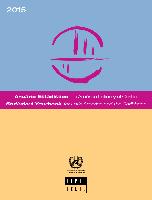OECD’s dynamic and comprehensive statistical annual showing a wide range of key statistics for its member countries and major additional countries. For each indicator presented, there is explanatory text including a definition, explanation of long-term trends, and references; a table showing the indicator over a significant time span for all countries covered, and graphics showing the key messages contained in the data. Under each table is a link to an Excel spreadsheet enabling the user to access the data. This publication is available in print form, as an iPhone app, and in html form.
OECD Countries covered include Australia, Austria, Belgium, Canada, Chile,Czech Republic, Denmark, Estonia, Finland, France, Germany, Greece, Hungary, Iceland, Ireland, Israel, Italy, Japan, Korea, Luxembourg, Mexico, Netherlands, New Zealand, Poland, Portugal, Slovak Republic, Slovenia, Spain, Sweden, Switzerland, Turkey, the United Kingdom, and the United States. Non-OECD countries covered include Brazil, China, India, Indonesia, Russia, and South Africa.
Topics covered include population and migration; production and productivity; household income, wealth and debt; globalisation, trade and foreign direct investment (FDI); prices, interest rates and exchange rates; energy and transportation; labour, employment and unemployment; science and technology including research and development (R&D) and the Information and Communications Technology (ICT) sector; environment including natural resoures, water,and air and climate; education resources and outcomes; government expenditures, debt, revenues, taxes, agricultural support and foreign aid; and health status, risk and resources.
http://www.oecd-ilibrary.org/economics/oecd-factbook_18147364
OECD Factbook













 Users Today : 34
Users Today : 34 Total Users : 35460243
Total Users : 35460243 Views Today : 42
Views Today : 42 Total views : 3418937
Total views : 3418937